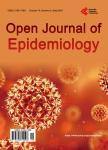Evaluation of Notifiable Disease Surveillance System in Centenary District, Zimbabwe, 2016
Evaluation of Notifiable Disease Surveillance System in Centenary District, Zimbabwe, 2016作者机构:Department of Community Medicine University of Zimbabwe Harare Zimbabwe Ministry of Health Mashonaland Central Provincial Medical Directorate Bindura Zimbabwe
出 版 物:《Open Journal of Epidemiology》 (流行病学期刊(英文))
年 卷 期:2017年第7卷第3期
页 面:251-261页
学科分类:1002[医学-临床医学] 100201[医学-内科学(含:心血管病、血液病、呼吸系病、消化系病、内分泌与代谢病、肾病、风湿病、传染病)] 10[医学]
主 题:Evaluation Notifiable Disease Surveillance Centenary Zimbabwe
摘 要:Background: Notifiable disease surveillance system (NDSS) data guides immediate action for events of public health importance. In July 2016, 12 patients suspected of typhoid were reported to Centenary District Medical Officer by phone. Following reporting, notification forms (T1) were not submitted to district, hence province did not receive district consolidated report (T2) for the notifications. This implies underreporting of notifiable diseases. Study was conducted to evaluate NDSS in Centenary district. Methods: Using updated Centres for Disease Control and Prevention (CDC) guidelines, descriptive cross sectional study was conducted among health workers sampled from all health facilities in Centenary district. Interviewer administered questionnaire and checklists were used to collect data, assess data quality and resource availability. Epi InfoTM 7 generated frequencies and proportions. Results: We interviewed 50 respondents from 13 health facilities and 64% were females. Health worker knowledge was rated low, 26% knew whom to notify and 40% knew forms are completed in triplicate. Reasons for failure to notify notifiable diseases included, unavailability of reporting forms 32% and lack of reporting guidelines 16%. Ninety-two percent were willing to participate. Four health facilities had at least six standard case definitions. The first two patients were only diagnosed at district level. NDSS information was used to procure antirabies vaccine and implement control measures. Conclusion: NDSS is useful, acceptable, unstable and not sensitive. Failure to notify was mainly due to lack of knowledge on NDSS. We recommend training of health workers and mentoring. Fifteen (IEC) case definitions and reporting guidelines were distributed to five health facilities.



